By Dan Weisz
After going to cooler elevations like Madera Canyon and Mt. Lemmon, I decided to try a very early morning trip to the agricultural fields of Marana northwest of Tucson. The draw this time was Burrowing Owls, whose young I heard were beginning to come out and investigate the world.
What I found was a number of other rewarding sights. One of them was a very large flock of White-faced Ibis. White-faced Ibis are large, dark wading birds. Many of the birds were in their breeding plumage (it is Spring after all) with white faces, a chestnut body, and red legs.
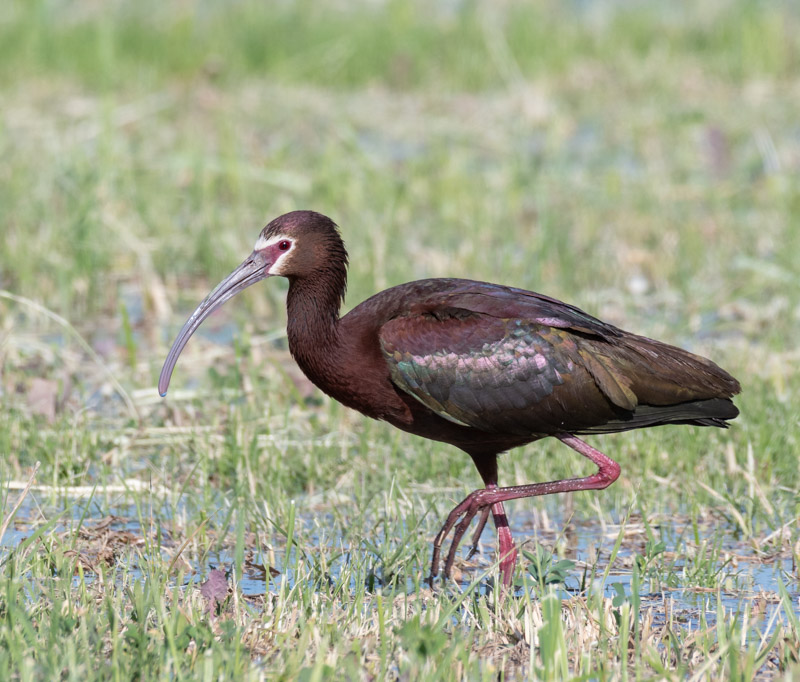
White-faced Ibis are birds of shallow marshes and wetlands, so what are they doing in southern Arizona? Well, we have similar habitat in our agricultural areas. When crop fields are flooded or irrigated, it provides the perfect habitat for these birds and we have a lot of agricultural acreage in southern Arizona.
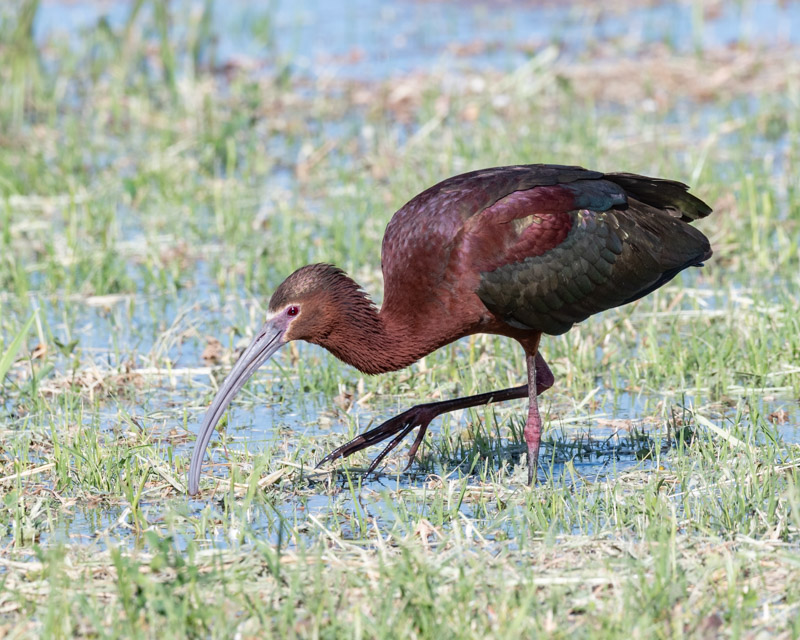
At this time of year, these birds are migrating through on their way to their breeding grounds. They stop to feed, using their long curved beaks to probe for insects and invertebrates. They forage in this shallow water, probing the soft mud for food and picking up insects and other items from the surface of the water or soil.
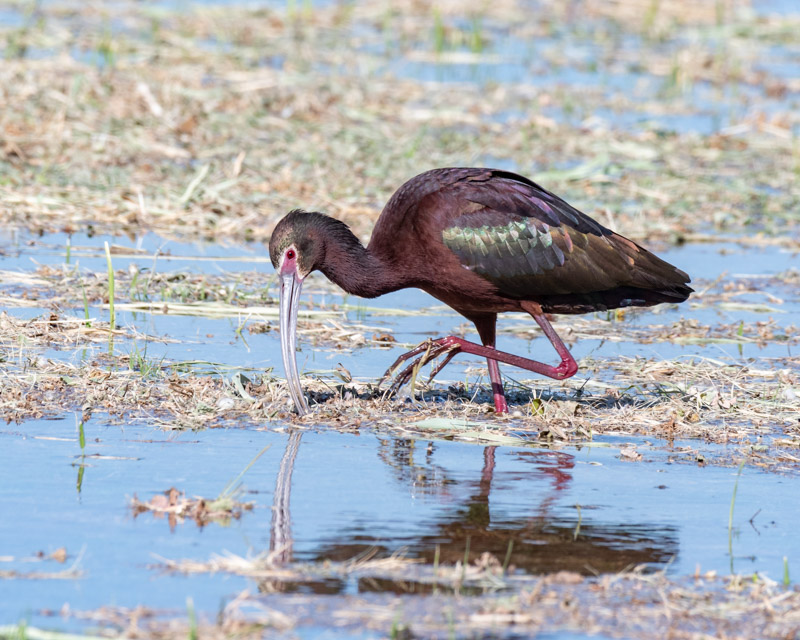
Their iridescent or metallic green and bronze wings can be seen in good light. I was fortunate to have the sun at my back for these photos and the farm field was alongside the road making it even easier for me to see and photograph this flock.
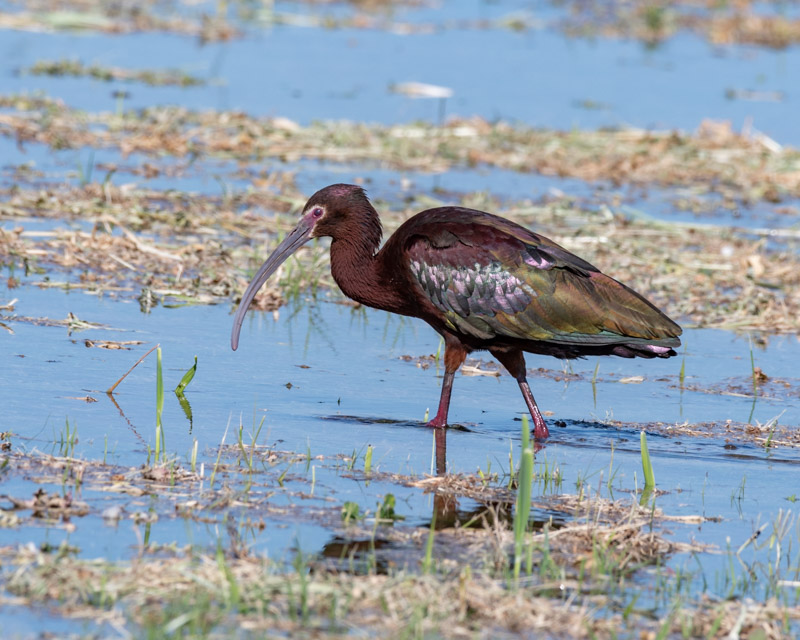
A handsome bird with its white face, red eye and a patch of bare, pink skin in front of the eye, this ibis almost seems to be smiling as it wades through the water. As hot as it has been around here, wading in cool shallow water seemed like a good idea to me as well.
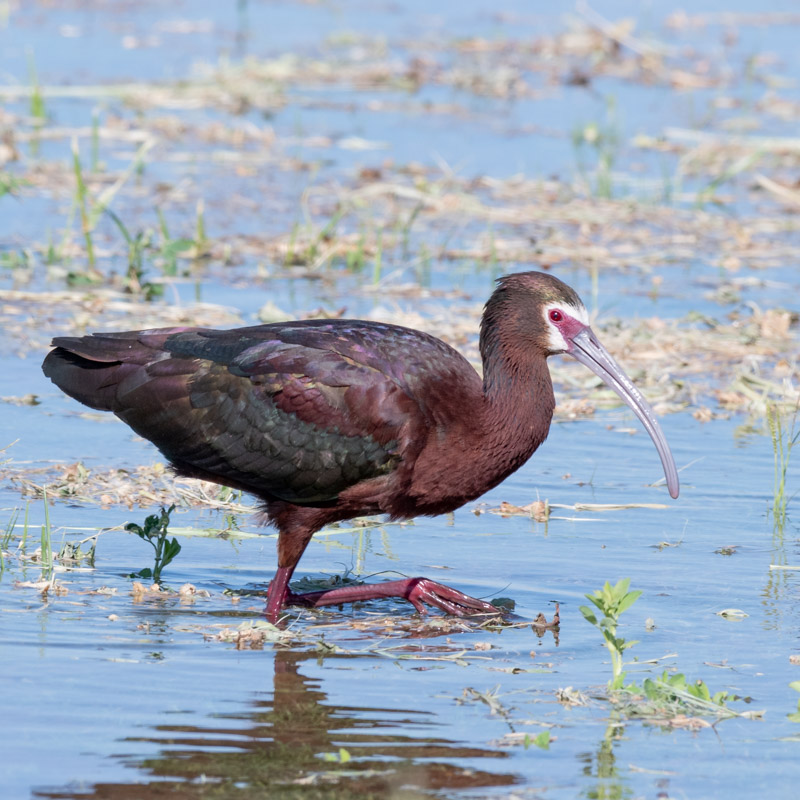
This is a bird of the Western United States. Present all year in southern California and coastal Texas and Louisiana, it is migratory elsewhere. Birds from all populations are likely to wander but this is a good time to see them around our part of the state.
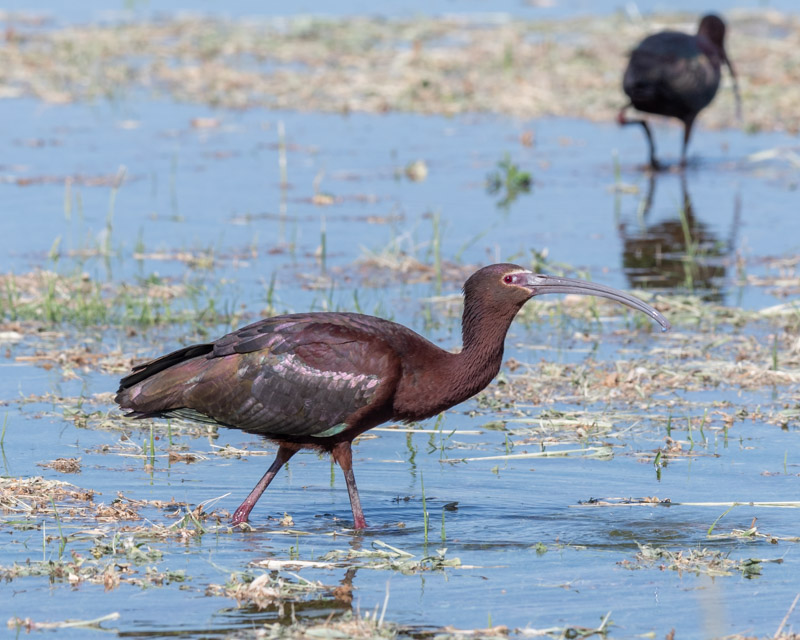
This photo gives you another perspective of how long the ibis’s bill is.
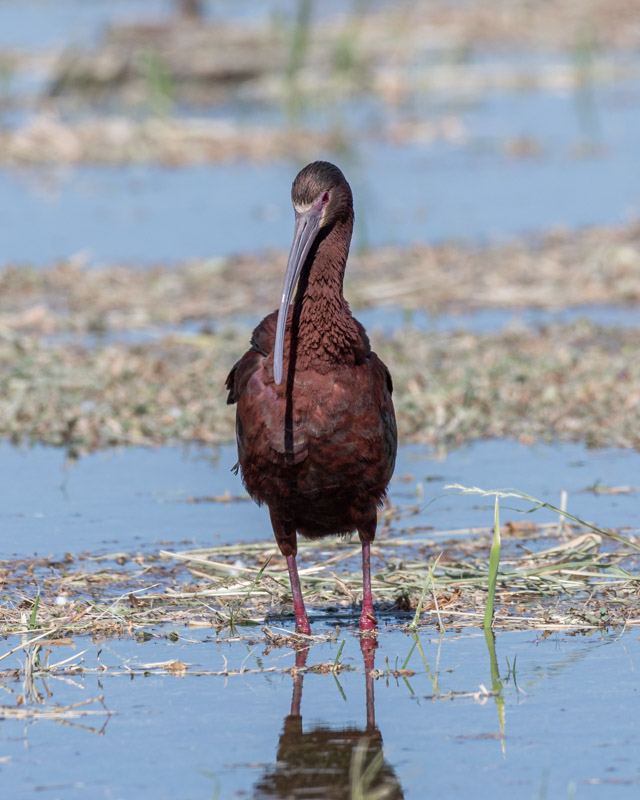
Like all birds do, White-faced Ibis will spend time preening. This grooming is done to keep the bird’s feathers in the best condition. Imagine what it takes to preen every single feather with a beak that size and shape.
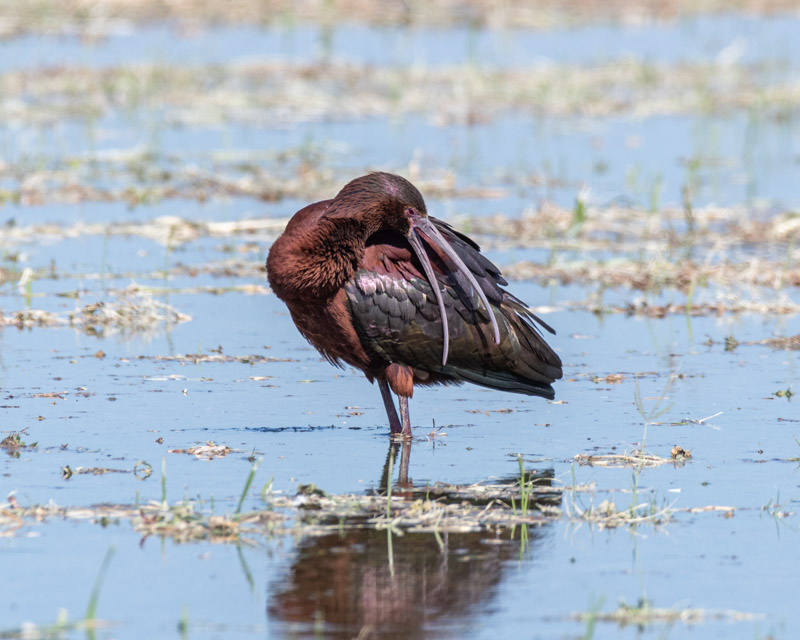
And of course, when you have an itch at the back of your head, or you need to preen those feathers, this is how you do it.
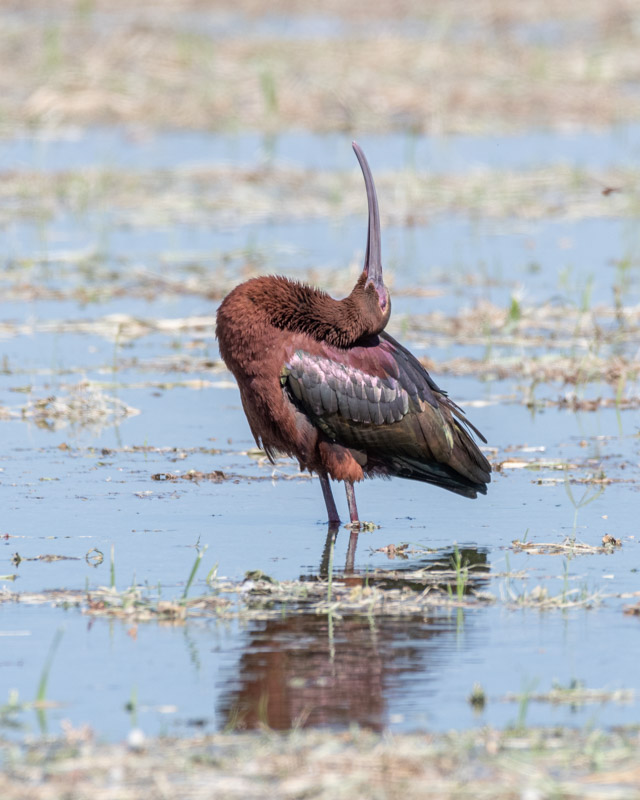
It was a treat to see this flock of White-faced Ibis. I had driven by this field two times in my “circuit” of Marana and seen nothing. The third time I drove by the field was in the process of being flooded and the ibis had already arrived.
My purpose for going to Marana was to see Burrowing Owls. I was not disappointed- photos to follow in the next email.
